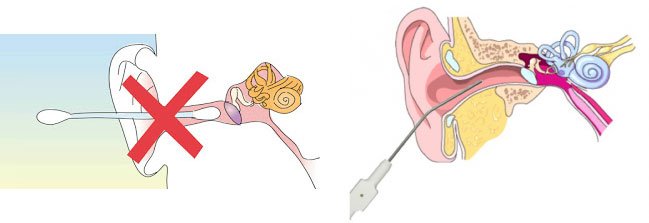Waxy Ears
May 22, 2017 | Uncategorized

In my practice, ear wax is more often found to be a nuisance than a benefit, but the design of ear wax is to protect the ears. Ear wax helps to catch debris and other small particles before they reach the ear drum and cause damage. All of us create ear wax in our outer ear canals and the amount and type of wax is genetically programmed. If you are a parent, you might overlook the benefits of the wax in your child’s ears as your sole concern could possibly be the constant yellow drainage spewing from their ears.
Yes, ear wax is helpful, but many times it presents as a constant abnormally-colored drainage from the ears, causes pain or fullness, creates hearing loss, spurs on dizziness, triggers ear ringing, or can cause itching. That is where we can help. We can help clear out ear wax and give you helpful tips to prevent ear wax from causing problems. So, what is the age-old answer to the question: what can we do about it?
My first answer: nothing. If ear wax is not causing fullness, hearing loss, dizziness, pain, or other symptoms – just leave it. It really is designed to be helpful. If it is not causing you harm, it is likely benefiting you. The body is actually designed to clear wax on its own. Just like our skin naturally turns over, so do the cells of our ear drum and ear canals. New cells are created at the center of the ear drum and naturally migrate to the edges of the ear drum, then onto the ear canal, and then slowly those cells get pushed towards the opening of the ear before sloughing off.
However, if that pesky ear wax is visibly sitting in the ear bowl, then gently wipe it away with a warm wash cloth. We strongly recommend against using q-tips for multiple reasons. First, q-tips pose a danger to the ear drum (yes, I have seen my fair share of punctured ear drums from q-tips…your kids will never sit as still as you want them to). Second, q-tips can cause micro-abrasions to the ear canal posing risk of infection. Third, q-tips can push ear wax further into the canal causing more problems. Finally, q-tips can let off microfibers which act as re-bar for wax formation. To say it plainly, do not use q-tips (just read the q-tip box label – it will tell you the same thing).
Okay, back to it. What can we do about it? We covered just simply wiping the outer ear clean, but what else? Well, one part of preventing ear wax problems is to watch what you are putting into your ears. Try to avoid ear-buds, but instead use over-the-ear phones. The same goes for ear-plugs, use an over-the-ear protection system. For our hearing-aid users, this is not something you can avoid – hearing aid devices are helping you more than the ear wax problem they are causing.
Another consideration is ear canal hygiene. Avoid using cheap soaps and shampoos that create ear canal dermatitis that can lead to wax formation. Moisturize the outer ear using non-scented creams and lotions. I usually tell patients to apply a few drops of peanut oil, canola oil, baby oil, or mineral oil once a week to help hydrate the skin of the ear canal and soften wax so it can naturally be removed from your canal.
We recommend against ear-candling. Less the risk of starting your hair on fire, ear candling is not proven. When tested, many of these systems never actually create the vacuum-suction they are actually sold to do. Again, I have pulled out my fair share of ear candling cloths in the ear canal.
If all else fails, see an Ear, Nose, & Throat specialist. Many patients are accustomed to their primary care provider washing out the ear canal with a warm-water wash, but this can be painful and it poses greater risk of ear drum perforation than when cleaned by an Ear, Nose, & Throat professional. We use microscopes to see exactly what we are doing. Our instruments are designed specifically for the purpose of cleaning out the ear. Our office is even equipped with small ear-vacuum systems that can gently vacuum-suction out ear canal contents without harming other structures. Call us to schedule your evaluation today (616) 994-2770.

